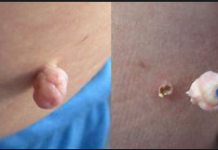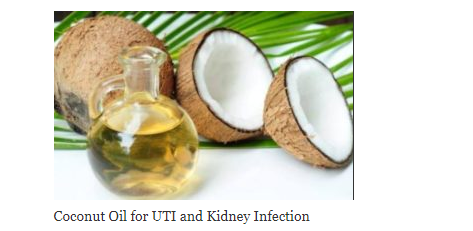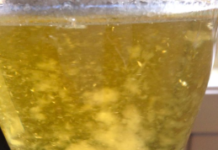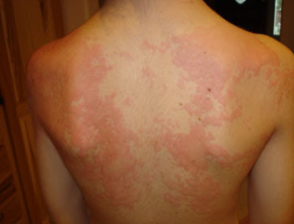What does it mean to have a lump on testicle? A cyst or bump on testicle can be hard, small and sore. In this page, we have provided information on the causes, symptoms and treatment of testicular lump.
Testicular bump or lump can be described as a mass that form in your testicles including the left, right or both. Testicles are male reproductive organs that hang loosely below the penis in the scrotum or sac.
A mass or lump on your testicles is a common condition that occur in men, teenagers and your children. There are different causes of bumps or cyst on the testicles. Most of these causes are benign or non-cancerous needing no treatment at all. It is however important to see GP to identify the cause. Testicular lumps are signs of a problem with your scrotum.

I have a lump on my testicle, what does it mean?
Having a lump on your testicles can be worrying. What does it mean to have swelling, lumps or bumps on your testicles? Although not all bumps or swelling indicate a serious health problem, you should visit your GP to identify the cause. Most bumps or swellings are caused by noncancerous or benign condition. These usually do not need treatment. Swellings can be an indication of testicular cancer.
Scrotal masses or bumps might be an accumulation of fluids, growth of abnormal tissues. Sometimes the lumps can be an indication of normal contents of the testicles becoming swollen, inflamed or hardened. The lumps needed to be examined by a doctor, whether you’re not in pain or having other mild symptoms.
Lump on testicle symptoms
The signs and symptoms of scrotal lumps may vary depending on the cause and abnormality. Testicular bumps or lumps cause a certain kind of noticeable swelling. Your testicles will feel changes in the texture. Below here are the signs and symptoms of testicular lump:
- An abnormal lump
- Tender, swollen or hardened testicles
- Feeling of heaviness in the scrotum
- Swelling in the testicles
- Redness of the skin of the scrotum
- Vomiting or nausea
- A painless lump
- Sudden pain
The cause of the swelling or lump on your testicles can be due to infection. The signs and symptoms associated with infection in the scrotum include:
- Fever,
- Frequency in urinating
- Blood or pus in the urine.
The symptoms tend to vary depending on the underlying cause. It is important you consult your doctor who will identify the cause. If you develop sudden pain in your scrotum, you need to see your doctor. Some conditions require urgent treatment to avoid permanent damage to your testicles.
Lump on testicle causes
There are a number of possible causes of testicular lumps. A swelling or lump on your scrotum can be due to excess fluid inside the testicles, abnormal tissue growth or inflammation. Injury, birth defects, testicular cancer, HIV or STDs can be the reasons why your testicles become swollen or develop a lump. The main causes are:
1. Varicoceles
Swelling or testicles developing a lump can be due to varicoceles. This is the enlargement of the veins within the scrotum. This condition is more common on the left side of testicles as a result of difference in blood circulation. Untreated varicocele can cause infertility in men. Varicocele lumps may become more noticeable after puberty.
Painless lumps in your testicles may be due to varicoceles. The condition is asymptomatic and no active treatment is therefore needed in most cases.
2. Testicular torsion
Your testicles can develop lumps when they become twisted. This can happen due to physical injury or an accident. This condition is more common in boys and teenagers between the ages of 13 and 17. Men of all ages can also be affected. The twisting happens in the spermatic cord, the bundle of blood, nerves and tubes that carries semen from the testicle to the penis. You’re likely to experience pain as blood supply is cut off.
This condition should treated as emergency. Other than pain, you may end up losing the testicles if not properly treated. The affected testicles can end up sideways, higher than normal and abnormally enlarged.
3. Testicular cancer
Although rare, lumps or swelling in the testicles can be indication of testicular cancer. This condition occurs in the testes located inside the scrotum. Compared to other type of cancer, cancer of testicles is rare. The possibility of lumps or bumps turning out to be cancerous is quite difficult. It is however, common in American males aged between 15 to 49 years. Signs and symptoms of cancer of the testicles include:
- A lump or swelling in one or both testicles
- Feeling of heaviness in the scrotum
- Back pain
- Fluid collecting in the testicle or scrotum
- Pain or discomfort in the scrotum
- A dull ache in the scrotum.
The cause of testicular is not known. However, according to doctors, this type of cancer occurs when healthy cells in a testicle become altered. Some cells develop abnormally causing growth of cells out of control. This result to a mass of cells in the scrotum or testicle. Cancer of the testicles can be risked by factors such as:
- Abnormal testicle development. This can due to conditions such as Klinefelter’s syndrome.
- Family history. You are likely to have cancer of the testicle if family members had it.
- Age. Testicular cancer is more common in teens and younger men those between 15 and 49 years. However, it can occur at any age.
- An undescended testicle. Usually testes are formed in the abdominal area during fetal development before descending into the scrotum before birth. Male who didn’t have their testes descending into the scrotum are at higher risk of testicular cancer.
This type of cancer is one of the treatable. The survival rate has been up to 99% of all the male diagnosed with testicular cancer. Once treated, the condition is rare to return. Treatment include surgical removal of the affected testicle –orchiectomy. Fertility or ability to have sex is usually not affected.
Although less commonly done, chemotherapy and radiotherapy may be done for seminomas.
4. Epididymal cyst
Swelling or lump on the scrotum can be due to inflammation of the epididymis. Bacterial infection or STDs such as chlamydia can be responsible for inflammation in the epididymis. Viral infection or abnormal flow of urine can hardly lead to epididymal cyst. The lumps on your testicle are caused by a collection of fluid in the epididymis.
The cyst doesn’t need treatment. However, if it causes pain or discomfort, you may need surgery.
5. Epididymo- orchitis
An inflammation of the testicles and/or the epididymis can result to enlargement, swelling or lumps on your testicles. The infection can be from urine or sexually transmitted infection. Viral infection in the epididymis and or testes can result to mumps. The signs and symptoms usually develop fast- probably after a day or so. The affected testes and epididymis swell fast and the scrotum become enlarged, red and tender. You may experience sudden pain.
6. Inguinal hernia
A hernia occurs when an organ like the intestines pushes through an opening in the muscles or tissues that holds it in place. Hernias are more common in the abdomen, but they can also appear in your belly button, upper thigh and in the groin areas.
Inguinal hernia are the most common type of hernia. You’re likely to get inguinal hernia when the intestines push through a weak spot or tear in the lower abdominal wall, usually in the inguinal canal found in the groin. An inguinal hernia appear as a mass or lump in the scrotum or testes.
Surgery is one of the available treatment for hernia. If the hernia is growing bigger or causing you pain, your GP may decide to operate it.
7. Hydrocele
A lump on your testicle can result when there is excess fluid between the layers of a sac that surround each testicle. This condition is known as hydrocele. A small amount of fluid is considered normal but excess of fluid results in a painless lump in the scrotum. Hydrocele occurs as a result of an imbalance in the production and absorption of fluid. This can be due to injury or an infection in the scrotum.
8. Hematocele
A swelling or lump in the testicle can occur when there is blood between the layers of scrotal sac of the testicles. The condition can result from injury such as direct blow to the testicles. Usually you will feel sudden pain and discomfort.
9. Lump on testicle STDs, herpes, HIV
The presence of lumps or abnormal masses found on the testicles and scrotum can be worrisome. If a lump on your testes is accompanied by symptom such as pain, swelling and redness, it could be an infection (STDs) such as herpes and chlamydia. Viral infection such as HIV can lead to bumps or lumps around your genitals including the testicles.
10. Testicular lump after vasectomy
Vasectomy or male sterilization involves a minor operations to cut the tubes that carry sperms from a man’s testicles to the penis. The tubes can be cut, blocked or sealed permanently. This prevents the sperms from reaching the semen.
There are a number of possible reasons for testicular lumps after vasectomy. While others are completely harmless, others are need medical attention. If you notice mass or lumps after vasectomy, contact your doctor urgently for further examination.
Post vasectomy lumps on your testicles can be classified into:
Sperm granuloma
This occurs when the sperms leaks from the surgery site causing inflammatory reaction. In turn, a small mass will begin to grow into a lump of the scar tissue. These lumps are very common. Rarely do these sperm granulomas cause any pain, usually they are often asymptomatic and will go on their own. The lumps can sometime grow large enough to be felt under the scrotal skin.
Scrotal hematoma
This is collection of blood inside the scrotum. It occurs when bleeding fails to stop after a vasectomy or when bleeding suddenly resumes at some point after the operation. Trauma or other conditions can be the reason for hematoma in the testicles.
Small, pea sized lump on testicle
If you notice a small lump the size of a pea or marble on your testicle, visit your GP for examination. Testicular cancer in men may have a variety of symptoms. The first sign or testicular cancer is the enlargement of the scrotum or a small lump. Other symptoms do not appear until the cancer has spread to other parts of the body.

The lump should be evaluated by your doctor as soon as possible.
Hard lump on left testicle
A hard lump in the scrotum on left testicle or both can have a number of possible causes. Abnormal tissue growing or normal tissue which has become inflamed or swollen. Any enlargement or swelling on your testicle should be evaluated by your doctor. The first sign of testicular cancer are a small lump or hardness. A hard lump could also be sebaceous cyst that won’t pop. You need to identify the cause for treatment if needed.
A hard lump on left testicle can be collection of blood (hematocele) in layers of scrotal sac. This can be due to injury. As the blood clot, it forms a hard lump on your testicle.
Sore, painful lump on testicle
Sore or painful testicular lumps can have a number of possible causes. A minor injury or trauma can result pain or discomfort. Sometimes the pain can be caused by a problem that starts in your abdomen, groin or somewhere else. An infection can result in pain, swelling or tenderness in one or both of your testicles.
Scrotal injury or testicular torsion can result in sudden extreme pain that require urgent treatment. Additionally, a lump caused by testicular cancer produces pain. Since it is difficult to figure out the cause of pain of a testicular lump based on symptoms alone, you should visit your doctor for further examination.
Lump in testicle sack no pain
Most of the lumps or swelling on testicles cause changes in the texture of the scrotum sac. Depending on the underlying cause, some lumps might be painful while others are not. For instance, epididymal cysts are generally painless. Similarly, hydrocele are painless and therefore harmless. They can feel heavier when they grow large causing a little discomfort.
Further References
- Scrotal masses:http://www.mayoclinic.org/diseases-conditions/scrotal-masses/basics/ lifestyle-home-remedies/con-20022447
- Testicular Lump: http://www.healthline.com/health/testicle-lump – Overview1
- Testicular Cancer Symptoms and Signs: http://www.cancer.net/cancer-types/testicular-cancer/symptoms-and-signs
- Testicular Lump:http://www.baus.org.uk/patients/conditions/12/testicular_lump
- Testicular Cyst:http://www.treatnheal.com/testicles/cyst-on-testicles/testicular-cyst-removal-pain-pictures-symptoms-treatment-causes/






